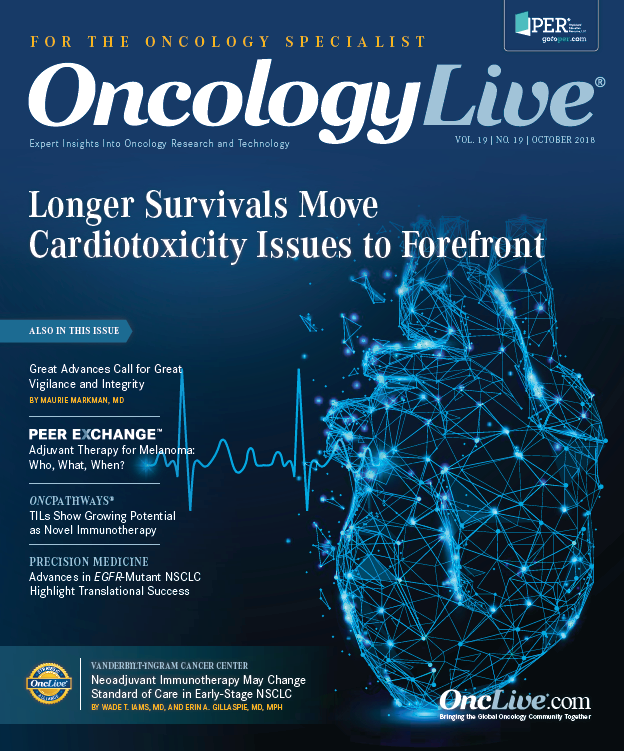Publication
Article
Great Advances Call for Great Vigilance and Integrity
Author(s):
Maurie Markman, MD, reflects on how technological advances have impacted translational science and clinical medicine.
Maurie Markman, MD

Maurie Markman, MD
It would be difficult to overstate the revolutionary changes occurring in our understanding of the biological basis of human disease. Spectacular technological advances have permitted what appears at times to be the almost routine reporting of paradigm-changing molecular-level observations that affect basic and translational science and clinical medicine. This progress is palpable.
Further, the internet (among other communication channels) can rapidly convey even the most preliminary provocative scientific hypothesis into wide circulation for consumption by the lay public.
Yet all is not well in the sphere of science and in messaging to the public. Consider, for example, the report that “unfounded rumors about the Zika virus were shared online 3 times as often as factual news articles during an epidemic in 2016 and 2017.”1 Rumors were defined as “misleading, false, or fabricated content,” including the suggestion that Zika is a conspiracy or a condition resulting from pesticides.
Or, consider the recent distressing, true report that the National Institutes of Health (NIH) aborted a study to examine the benefits of moderate drinking after discovering that staffers at the National Institute on Alcohol Abuse and Alcoholism broke NIH rules by directly soliciting the alcoholic beverage industry for donations to fund the project.2
We can add to this list the recent federal conspiracy charges brought against the 2 leaders of Theranos, a once high- f lying company that promi sed ( i n the complete absence of scientifically rigorous peer-reviewed data) that their blood test would revolutionize clinical laboratory testing3; the suggestion that a worrisome percentage (6%, by 1 estimate) of scientific papers in the United States is published in bogus journals4; and the finding of the US National Academies of Science, Engineering, and Medicine (NASEM) that sexual harassment is rife in US science.5
Recently, several murine laboratory studies questioned the true specificity of the paradigm-changing gene-editing technology known as CRISPR (clustered regularly interspaced short palindromic repeats) and raised appropriate concerns about the potential for unanticipated serious consequences when this strategy is employed in the setting of human disease.6,7 Although the impact of these animal experiments on the future of this important technology remains unclear, it is reasonable to urge caution in the development of CRISPR clinical trials, including in the area of oncology.
And if that is not enough, consider the chilling study, also from the NASEM, that examined the realistic potential that major technological advances in synthetic biology might ultimately be used to create agents employed in bioterrorism activities.8 “Capabilities currently warranting the highest relative level of concern include recreating known pathogenic viruses, making biochemical compounds via in situ synthesis, and using synthetic biology to make existing bacteria more dangerous,” according to the analysis. “These capabilities are based on technologies and knowledge that are readily available to a wide array of actors. Capabilities posing a moderate- to-high relative level of concern include manufacturing chemicals or biochemicals by exploiting natural metabolic pathways and the use of synthetic biology to make existing viruses more dangerous.”8
The question to be asked here is whether the fundamental message of these distressing reports involving a wide range of clinical and broader societal concerns is reaching those with the necessary regulatory and legal responsibility to act and whether they will exercise their authority to do so.
In the area of cancer investigation, a recent report has once again highlighted the known, potentially serious, but rarely appropriately acknowledged issue of whether clinical trial results considered for regulatory drug approval have relevance to the real-world cancer patient population.9
The current analysis emphasizes the striking age differences between the patient populations who participated as research subjects in published clinical trials involving anti—PD-1 therapies and those with early noninvestigative clinical experience with these agents once available for commercial sale. As noted in this report, the percentage of patients over age 65 treated with what are widely acknowledged to be impressive clinically active drugs for melanoma, non–small cell lung cancer, or renal cell cancer was substantially lower in the published clinical trials than in the practice setting.9
The obvious issue here, which must be considered a matter of great concern, is the relative opportunity for benefit versus the potential risk of harm associated with treating a large patient population who may have been seriously underrepresented (age, presence of clinically relevant comorbidities) in the clinical trials leading to regulatory approval.
Further, one must acknowledge the uncertain validity of the data employed by individual physicians and patients in the critical decision-making process regarding whether to use a particular management strategy, as well as consider the lack of evidence on what the appropriate dose or schedule should be in these woefully understudied large patient populations.
Again, the question to be asked is: Are those with the necessary authority to change the current distressing situation actually listening?
References
- News at a glance. Science. 2018;360(6394):1154-1156. doi: 10.1126/science.360.6394.1154.
- Wadman M. NIH kills alcohol trial, starts hunt for other suspect studies. Science. 2018;360(6395):1286. doi: 10.1126/science.360.6395.1286.
- Topol E. Blood, sweat and tears in biotech—the Theranos story. Nature. 2018;557(7705):306- 307. doi: 10.1038/d41586-018-05149-2.
- Publish and don’t be damned: some science journals that claim to peer review papers do not do so. The Economist. June 23, 2018. economist.com/science-and-technology/2018/06/23/some-science- journals-that-claim-to-peer-review-papers-do-not-do-so. Accessed September 9, 2018.
- Witze A. Sexual harassment is rife in the sciences, finds landmark US study. Nature. 2018;558(7710):352-353. doi: 10.1038/d41586-018-05404-6.
- Zimmer C. A Crispr conundrum: How cells fend off gene editing. The New York Times. June 12, 2018. nytimes.com/2018/06/12/science/crispr-cancer-gene-editing.html. Accessed September 9, 2018.
- Kosicki M, Tomberg K, Bradley A. Repair of double-strand breaks induced by CRISPR-Cas9 leads to large deletions and complex rearrangements. Nature Biotechnol. 2018;36(8)765-771. doi: 10-1038/nbt.4192.
- Biodefense in the Age of Synthetic Biology. Washington, DC: National Academies Press; 2018.
- O’Connor JM, Fessels KL, Steiner J, et al. Speed of adoption of immune checkpoint inhibitors of programmed cell death 1 protein and comparison of patient ages in clinical practice vs pivotal clinical trials. JAMA Oncol. 2018;4(8):e180798. doi: 10.1001/jamaoncol.2018.0798.


FDA Accepts Resubmission of BLA for Cosibelimab in Locally Advanced or Metastatic CSCC








